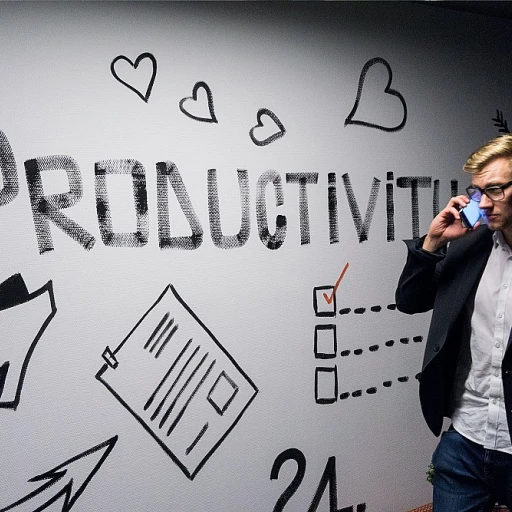
Understanding the Importance of Work-Life Balance
Recognizing the Foundations of Equilibrium
The concept of work-life balance has gained significant importance, especially as more individuals and families navigate the complexities of daily commitments. With increased awareness around mental health and well-being, achieving a balance between professional and personal responsibilities can impact how teens, as well as adults, thrive in different environments. Establishing a healthy balance is pivotal for the overall mental health of all age groups, including teenagers who are already grappling with school, relationships, and emerging responsibilities. Therapy sessions often highlight the significance of balance, equipping teens with coping skills to handle challenges effectively. Open-ended questions in therapy can help teenagers delve into their feelings, providing avenues for communication that foster better relationships with family and peers. In particular, questions during teen therapy can function as powerful conversation starters, enabling therapists to identify any signs of imbalance in teenagers’ lives. Through open-ended questions, teens feel comfortable expressing themselves, which is crucial in addressing any mental stress they might experience due to an uneven work or school-life dynamic. Integrating activities that enhance holistic development during therapy sessions can also contribute to achieving better equilibrium. By engaging in group therapy, teens can learn from peers about diverse coping mechanisms, reinforcing their ability to maintain a balanced life. For those seeking guidance on preserving their mental well-being amidst busy schedules, this ultimate checklist for work-life balance offers practical insights to help maintain sanity and harmony between different aspects of life.Identifying Signs of Imbalance
Spotting the Red Flags
In the quest for achieving harmony between work and personal life, it's crucial to identify the subtle signals that indicate imbalance. Recognizing these signs can be incredibly beneficial in understanding when to take proactive steps toward regaining control. This awareness is essential not just for adults but also for teens, as their mental health can be deeply impacted by stressors from school, family, and social relationships. Teenagers might exhibit signs such as anxiety, irritability, or withdrawal from favorite activities. These could be warning indicators urging the need for help. Therapists working with kids and teens often use open-ended therapy questions to surface underlying issues. Such questions provide a safe space for teenagers to express their discomfort, enabling therapists to address concerns effectively during teen therapy sessions. Parents and guardians, on the other hand, should remain vigilant and maintain communication channels open. Building strong relationships relies on understanding what teens might not be saying straightforwardly. Encouraging conversation starters and asking powerful questions in a non-intrusive manner can help kids feel comfortable enough to share their struggles. Finally, it’s critical to engage with resources that delve into the wider impact of persistent stresses. Articles such as the one on understanding the impact of long-term disability on employees provide insights not just applicable to the workforce but can also offer perspectives beneficial for handling teen-related challenges. Identifying these signs in teenagers and facilitating supportive environments can lead to healthier coping mechanisms, nurturing both mental and emotional well-being in the long run.Strategies to Achieve Work-Life Balance
Embracing Practical Approaches to Harmonize Life and Work
Achieving work-life balance often requires conscious effort and strategic planning. By understanding the significance of this balance for mental health, we can begin to implement effective measures. Here are some tailored strategies that can help integrate work and personal life effectively:- Set Clear Boundaries: Establishing boundaries between work and personal life can create a healthier environment for teens and adults alike. Clearly defining work hours helps prevent the creeping of work responsibilities into personal time. This can help improve mental health and diminish stress, allowing for focused and restorative personal time.
- Prioritize Self-Care Activities: Incorporating therapy sessions, hobbies, and activities that promote mental health is vital. Self-care is not just a luxury but a necessary part of maintaining balance. By urging teens and adults alike to participate in leisure activities, we reinforce coping mechanisms and develop healthy routine practices.
- Utilize Open Communication: Within families or even in school settings, open-ended questions are valuable for encouraging deeper conversations. This can be a part of effective therapy activities, helping develop healthier relationships and greater understanding among kids, teens, and their parents. Communication can offer insights into daily stressors and the need for balance.
- Leverage Technology Wisely: While technology plays a significant role in our daily lives, its proper use is crucial for maintaining a balance. Limiting screen time and using apps to assist with time management can support healthier habits. It is important to help teens to feel comfortable with technology yet control its use to prevent burnout.
- Seek Professional Guidance: Sometimes, achieving work-life balance might necessitate professional intervention. Teen therapy or family counseling offers avenues to explore underlying issues and provide guidance. Group therapy sessions can also provide a support network, promoting shared experiences and coping skills.
The Role of Employers in Promoting Balance
The Role of Employers in Supporting Personal Well-being
To effectively create a harmonious work-life balance, it is crucial for employers to play an active role in supporting the personal well-being of their employees. This involves implementing policies and initiatives that foster an environment where work and personal life can coexist peacefully. One way employers can contribute is by cultivating a culture of open communication. Encouraging employees to voice their concerns and preferences regarding work schedules can help maintain a healthy balance between work commitments and personal responsibilities. Open-ended questions during meetings or check-ins can create an atmosphere where employees feel comfortable sharing their challenges and successes. Moreover, offering flexible work arrangements can significantly impact employees' mental health. When companies allow for remote work options or flexible hours, employees, especially those with family and school obligations, can better manage their time. Providing access to mental health resources, such as counseling sessions or therapy activities, is another valuable support mechanism. Taking proactive steps, such as organizing workshops or group therapy sessions that focus on stress management and coping skills, can also empower employees in their pursuit of balance. These activities can enhance relationships within teams, facilitating better collaboration and communication. An effective employer-driven strategy should consider the diverse needs of the workforce. Whether it is addressing the requirements of teens entering the workforce, or established employees looking for counseling options, understanding and responding to these differing requirements can result in a more cohesive workplace. Ultimately, the integration of thoughtful policies and resources can aid in not only enhancing work-life balance but also in reducing turnover and improving overall job satisfaction. These measures reflect the importance of a supportive work environment in maintaining a fulfilling and balanced life.The Impact of Technology on Work-Life Balance
The Digital Divide: Navigating Technology in Work-Life Harmony
In today’s digital world, the impact of technology on work-life balance is profound. It can be a double-edged sword, offering tools and apps to streamline tasks, yet leading to blurred lines between work and personal life due to constant connectivity. Understanding how to use technology wisely is crucial for maintaining a balance that supports mental health and overall well-being.
Technology opens up lines of communication, enabling easier interactions between employers, employees, and family. While this is beneficial, it's important to have boundaries. Encourage teens to establish tech-free zones or times to disconnect from digital demands, fostering meaningful face-to-face relationships and activities.
In settings such as family or group therapy sessions, therapists can utilize open-ended questions to help teens explore their reliance on technology. For instance, "How does constant connectivity make you feel?" or "In what ways do you find technology helpful in managing school and family responsibilities?" These powerful questions help teens and kids feel comfortable expressing their thoughts, encouraging reflection on their tech habits.
It is also vital to discuss the role of technology in mental health. Therapists often include questions about how digital interactions affect teens’ self-perception and relationships. This can lead to insightful conversations and help identify if tech use is contributing to mental health challenges. Questions like, "Do you feel more connected or isolated with your technology usage?" can be conversation starters that open up discussions in teen counseling or therapy sessions.
Employers can also play a role in promoting a healthy tech balance by setting clear expectations around after-hours communication. The emphasis should be on productivity, not availability, ensuring that employees feel supported in setting limits that contribute positively to their mental and physical health.












